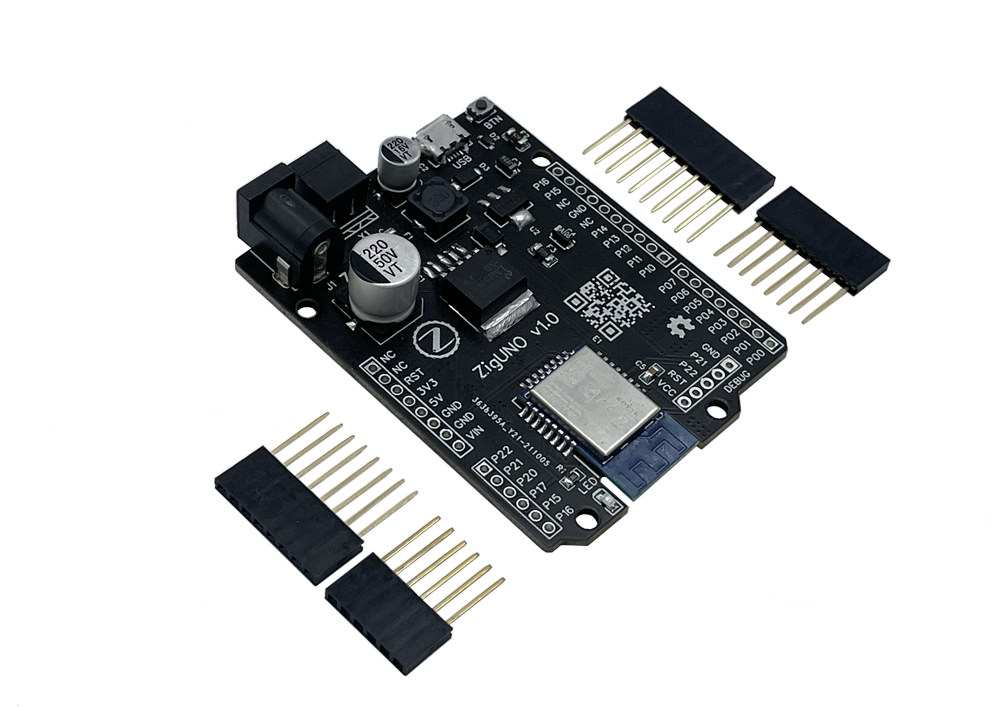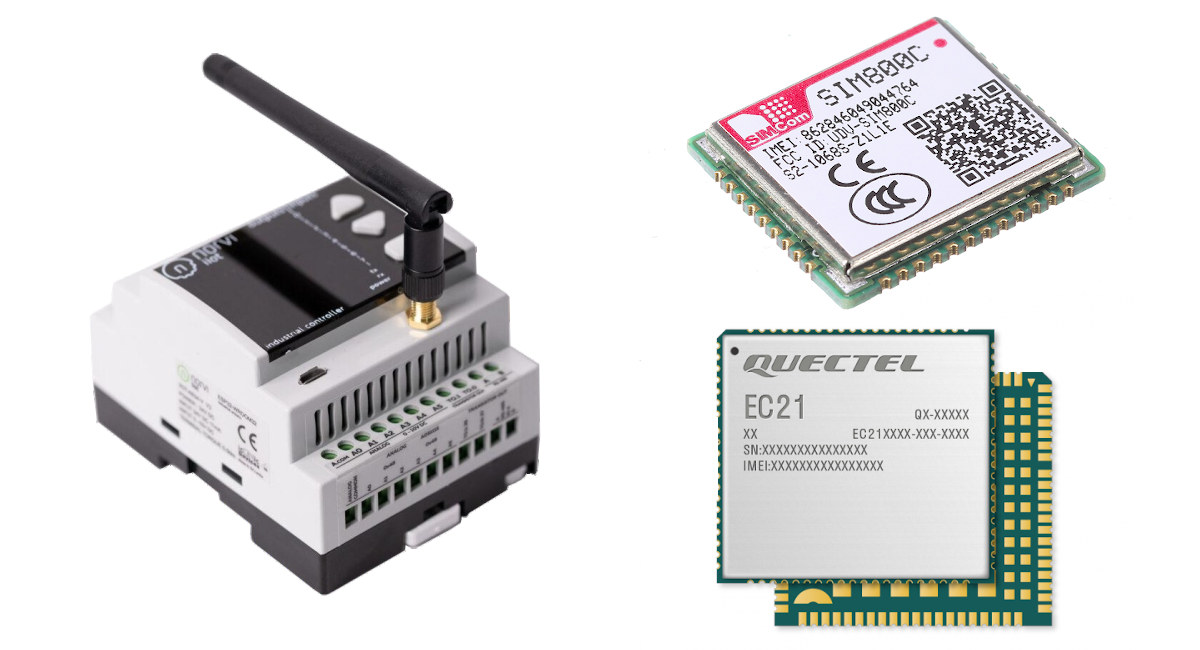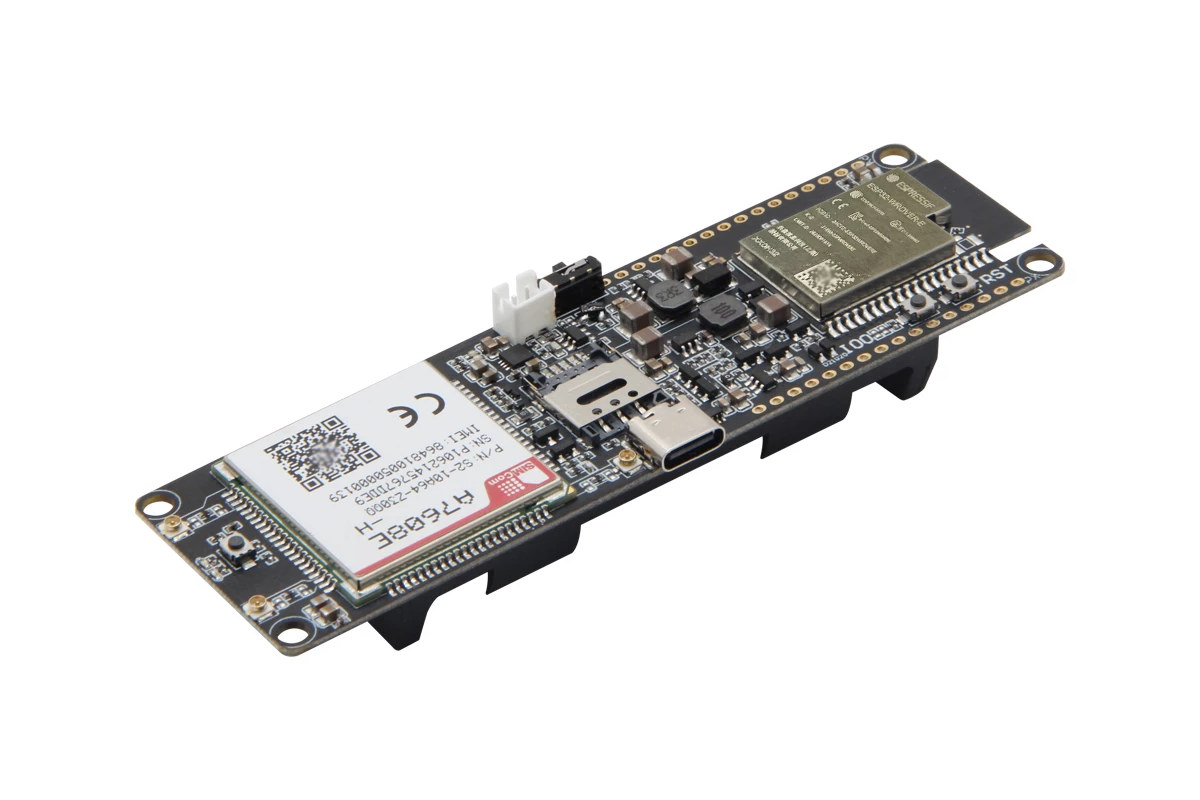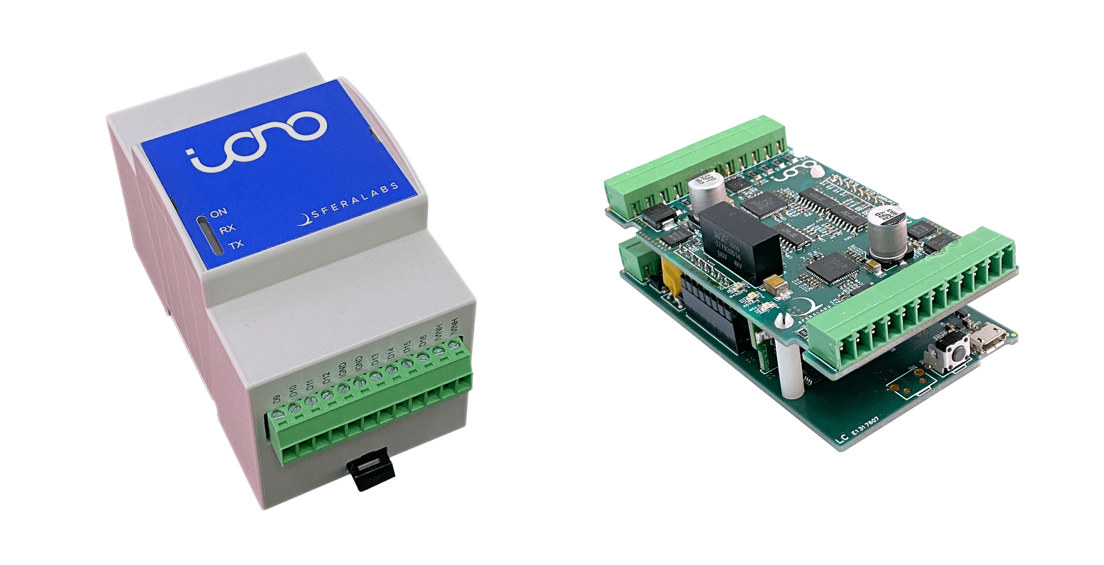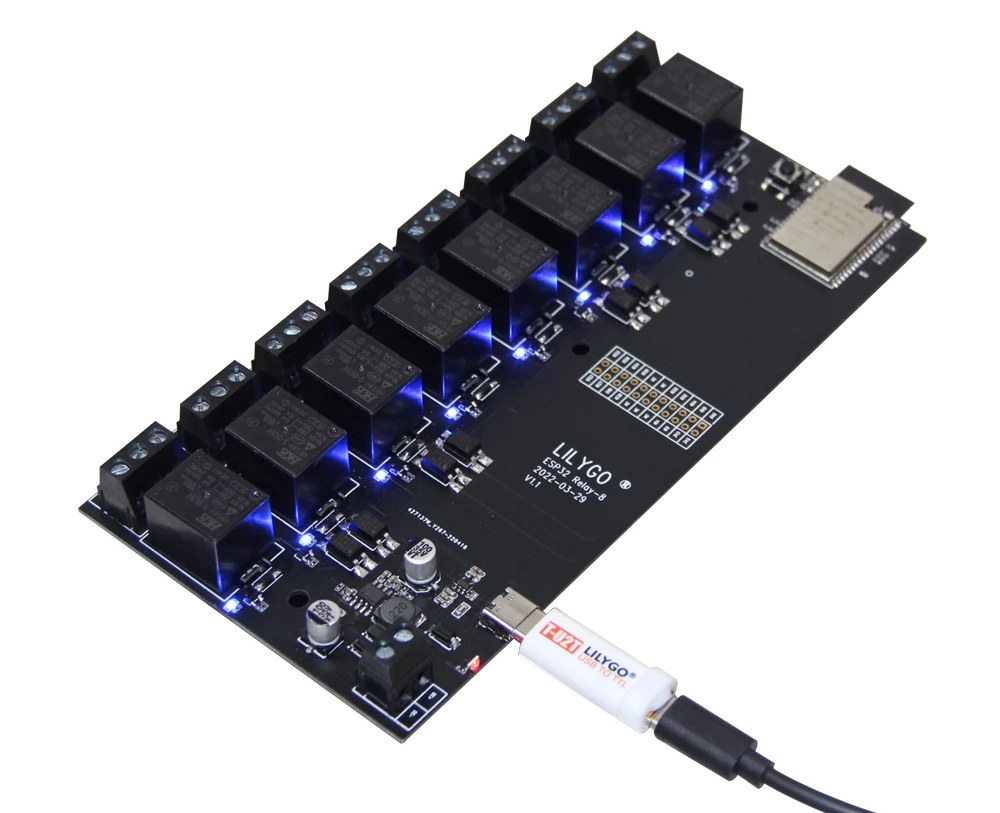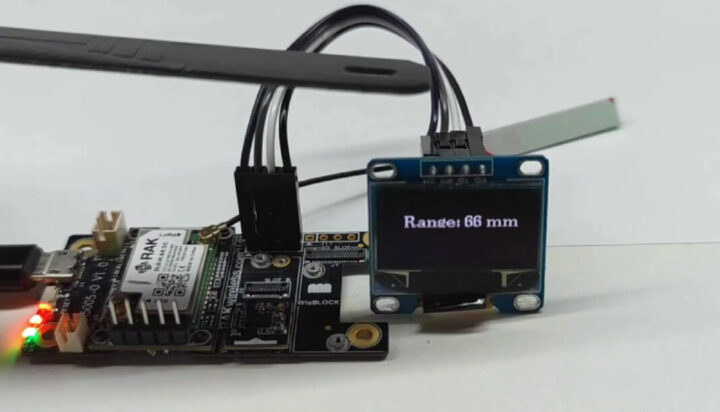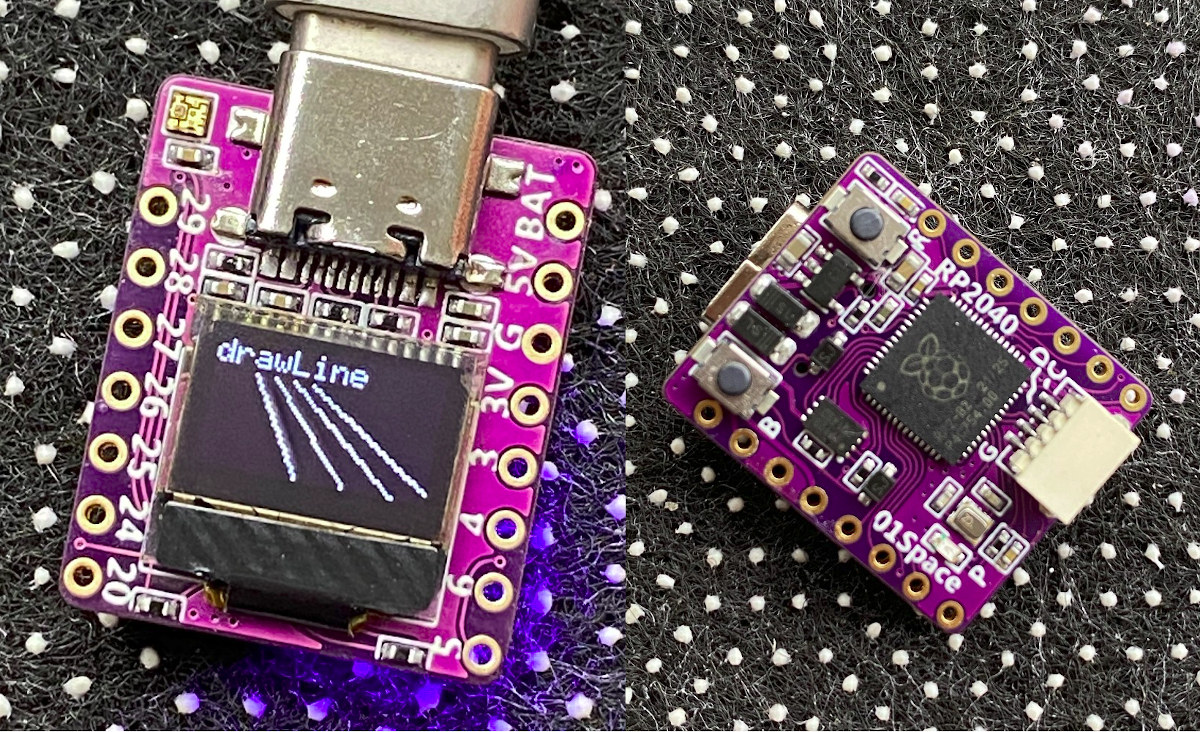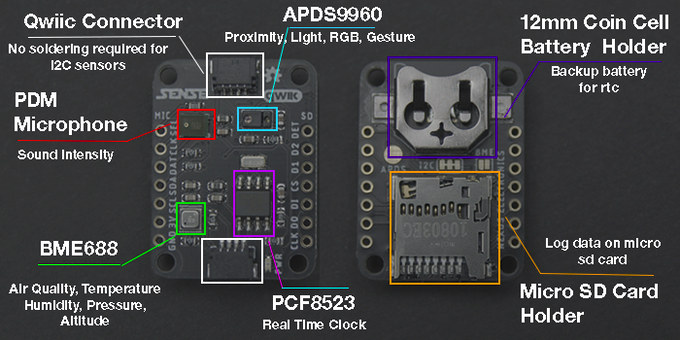ZigUNO Zigbee development board comes with an Ebyte E18-MS1 module equipped with Texas Instruments SimpleLink CC2530 8051 Zigbee microcontroller and follows Arduino UNO form for Arduino Shield compatibility. The board works with PTVO Zigbee firmware that comes with a graphical configuration tool to select the Zigbee chip used (CC2530), configure I/O behavior (input/output, pull-up, etc…), and more. The developers also suggest using DIYRuZ projects as examples to get started. ZigUNO board specifications: Zigbee module – Ebyte E18-MS1-PCB module with TI SimpleLink CC2530 8051 microcontroller with Zigbee 3.0 (and IEEE 802.15.4) connectivity, 256kB Flash and 8kB RAM, PCB antenna Expansion – Arduino UNO headers (3.3V only, not 5V tolerant) Power Supply – 5V up to 1.5A via 5.5/2.1mm DC jack, 2-pin terminal block, or micro USB port Dimensions – 82x54x13 (Arduino UNO form factor) Temperature Range – 0 to 50°C You’ll find the hardware design files including EasyEDA PDF schematics, BoM, […]
NORVI GSM industrial controller with WiFi and cellular connectivity supports Arduino or ESP-IDF programming
We’ve already seen ESP32 WiFI & Bluetooth SoC combined with a cellular modem several times already, and a couple of days ago, I wrote about LILYGO T-A7068X ESP23 board with a 4G LTE modem. Iconic Devices team has made another cellular ESP32 product with the NORVI GSM industrial controller. The DIN-Rail mountable USB programmable controller is offered with a choice of SIMCOM SIM800L 2G-only modem or QUECTEL EC21-G modem adding 3G UMTS/HSPDA+ and 4G LTE cellular connectivity. It also offers Ethernet connectivity, digital and analog inputs, relay outputs, and a small 0.96-inch OLED information display with options varying depending on the exact model. NORVI GSM specifications: Main module – ESP32-WROOM-32 with ESP32-D0WDQ6 dual-core microcontroller @ up to 160 MHz with 520 KB SRAM, 4 MB flash, 2.4 GHz WiFi 4 and Bluetooth 4.2 connectivity Cellular module (one or the other) SIMCom SIM800L quad-band GSM/GPRS module Quectel E21-G worldwide 4G LTE, […]
ESP32 board with 150Mbps 4G LTE modem also supports RS485, CAN Bus, and relay expansion
LILYGO has designed another ESP32 board with a 4G LTE modem with the LILYGO T-A7608E-H & T-A7608SA-H variants equipped with respectively SIMCom A7608SA-H for South America, New Zealand, and Australia, and SIMCom A7608E-H for the EMEA, South Korean, and Thai markets, both delivering up to 150 Mbps download and 50 Mbps upload speeds. The board also supports GPS, includes a 18650 battery holder, and features I/O expansion headers that support an add-on board with RS485 and CAN bus interfaces, in a way similar to the company’s earlier TTGO T-CAN485 board with ESP32, but no cellular connectivity. LILYGO T-A7068E-H/T-A7608SA-H board specifications: Wireless Connectivity WiFi & Bluetooth – ESP32-WROVER-E module based on ESP32 dual-core processor @ 240 MHz with 4MB flash, 8MB PSRAM, 2.4 GHz WiFi 4 and Bluetooth 4.2/5.x connectivity, PCB antenna Cellular connectivity Data transfer speeds 4G LTE – Up to 150 Mbps downlink, up to 50Mbps uplink 3G HSPA+ […]
Iono RP D16 industrial IO module features Raspberry Pi RP2040 MCU
Sfera Labs has launched another Raspberry Pi RP2040-based hardware platform with the Iono RP D16 industrial IO module following the Exo Sense RP multi-sensor module we covered last month. The Iono RP D16 module provides sixteen digital 24V I/O lines, an RS-485 serial interface, a wide range 12-28V power supply input, and its DIN-rail case enables installation in electrical cabinets and automation control systems. Iono RP D16 specifications: MCU – Raspberry Pi RP2040 dual-core Arm Cortex-M0+ microcontroller @ 133MHz with 264kB on-chip SRAM Storage – 16MB SPI flash Inputs/Outputs via terminal blocks Up to 16x 24V 640mA outputs driven by high-side switches that can also be configured as push-pull drivers for high-speed switching (via MAX14912 chips) Up to 16x 24V IEC 61131-2 compliant current-sinking inputs (via MAX22190 chips) 4x TTL level I/Os (1-Wire, I2C, Wiegand support) Serial – RS-485 interface to the RP2040 serial lines via terminal block with electrostatic […]
T-Relay-8 – An ESP32 board with 8 relays
LilyGo T-Relay-8 is an ESP32 WiFi & BLE board equipped with eight 5V relays supporting up to 250V AC or 28V DC, as well as 16-pin GPIO header for expansion. The board offers a more compact solution than the usual two-board setups with an ESP32 board and a separate 8-relay “Arduino” module, and also integrates optocouplers for improved safety. LilyGo T-Relay-8 specifications: Wireless module – ESP32-WROVER-E module with ESP32 dual-core processor with 2.4 GHz WiFi 4 and Bluetooth 4.2 connectivity, 4MB flash, 8MB PSRAM Relays – 8x HRS4H-S-DC5V 5V relays up to 250VAC/10A or 28VDC/10A with octocoupler isolation, blue LEDs for status Expansion – 16-pin header (unpopulated) with GPIOs, 3.3V, and GND USB – 1x USB Type-C for programming via optional T-U2T dongle via CH9102 USB to TTL chip Misc – Reset button, red user LED Power Supply – 12V to 24V via 2-pin terminal block Dimensions – 17 x […]
How to use a ToF laser ranging sensor with Arduino and Wisblock
Laser ranging has many applications in production and life, such as ranging, positioning, obstacle avoidance, and so on. Time-of-Flight (ToF) ranging, as a type of laser ranging technology, is often used for real-time object detection in robots, autonomous vehicles, and traffic management because of its accuracy, fast response, and low power consumption. The face detection function of mobile phones also uses this technology. This article will introduce the WisBlock RAK12014 ToF laser ranging sensor module, and use the WisBlock development board to demonstrate how the module works. What is a ToF laser ranging sensor module? A ToF laser ranging sensor module uses laser pulses to measure the distance between itself and a target object. The WisBlock RAK12014 ToF laser ranging sensor module is based on STMicro VL53L0X, the smallest ToF ranging sensor in the world. The WisBlock RAK12014 provides accurate distance measurement and can measure distances up to 2 meters. […]
Raspberry Pi RP2040 board comes with 0.42-inch display, Qwicc I2C connector
We’ve recently written about ESP32-C3-0.42LCD board with ESP32-C3 wireless microcontroller, a 0.42-inch display, and a Qwicc connector for expansion. But it turns out the developer, 01Space, has also launched an almost identical board, RP2040-0.42LCD, with Raspberry Pi RP2040 MCU replacing the ESP32-C3 WiFi and Bluetooth MCU. RP2040-0.42LCD board specifications: SoC – Raspberry Pi RP2040 dual-core Cortex-M0+ microcontroller at up to 125 MHz, with 264KB SRAM Storage – 2 MB SPI flash Display – 0.42-inch OLED USB – 1x USB Type-C port for power and programming Expansion Qwiic I2C connector 7-pin and 8-pin headers with up to 11x GPIOs, 2x SPI, 2x I2C, 4x ADC, 1x UART, 5V, 3.3V, VBAT, GND Misc Reset and Boot buttons RGB LED, power LED Power Supply 5V via USB-C port or Vin VBAT pin for battery input 3.3V regulator with 500mA peak output Dimensions – 23.5 x 18 mm Weight – About 2.5 grams The […]
$30 compact multi-sensor board works with any microcontroller with I2C (Crowdfunding)
SENSE is a compact multi-sensor board supporting measurement of air quality, sound, light intensity, temperature, proximity, etc… and designed by Zack Seifert, a seventeen-year-old electronics enthusiast and president of his school’s robotics team. SENSE can work with any microcontroller or processor with I2C (hardware or implemented with bit-banging), including Arduino and Raspberry Pi boards. and an extra Qwiic connector allows for additional sensors. SENSE board specifications: Storage – MicroSD card holder Sensors


